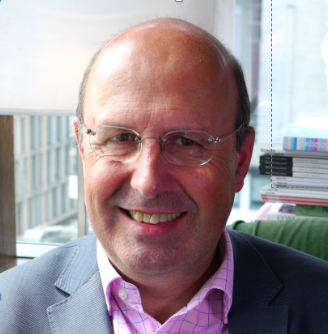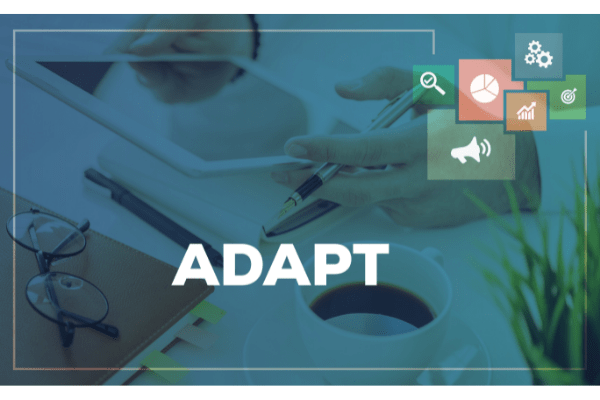You can sign up to our LinkedIn newsletter here.
Is it just Resilience?
When I first looked at this, I was very sceptical. What does adaptability really mean? There are lots of responses to this rapidly changing world. One of the most common things that people are demanding of their teams and organisations is resilience. But as I look at what people expect when they say ‘resilience’, what they really mean is, they want people to cope with more pressure. They want people to be able to take on more stress, work harder and ‘resilience’, in the modern code of organisational culture, is the ability for an organisation to put more pressure on people and for them to survive. That doesn’t feel like adaptability to me.
Is it just Innovation?
The other term that is constantly banded about is ‘innovation’. If you can be more innovative, then you can be more adaptable. But what is it that enables an organisation to be more innovative? And how do you measure it? You see people looking at measures of innovation, like the number of patents registered, or the frequency of product releases or the number of Six Sigma improvements. It’s a very broad brush. It’s a term that has become almost meaningless. Innovation is not necessarily the key measure of adaptability.
Adaptability Quotient from AQai.io
More recently I’ve come across an interesting framework for looking at adaptability that sees adaptability capability as comprising three dimensions to enable you to ‘A.C.E.’ the capability of adaptability.
Learned Ability
The first is a set of competences or abilities, that individuals can develop that gives them more adaptability. In this framework this is called the ‘Ability’ dimension. By measuring the level of competence they have in the abilities that make up adaptability, you can base line competence and provide various learning interventions to develop the these abilities.
Developing Character
The second thing in this model that they measure is ‘Character’. The way they approach measuring character is quite interesting. The AQ model sees character as something which can be developed. Traditional personality profiling tools like DISC or MBTI seek to establish those aspects of your personality preferences which are immutable over time. The philosophy of AQ adopts two lenses on character. Firstly, it establishes your current preferences. Deepening your understanding of current preferences, and of those that you work with, helps you to understand how you deal with the different kinds of change that you face. It also informs you as to how to adapt the way you communicate and implement change for those with different preferences. Secondly, as you understand how these preferences impact your response to change, you can develop your character so that you can make better choices to change and become more able to respond.
Changing the Environment
The third dimension is ‘Environment’. Because this adaptability measure is focused on the workplace, they measure the organisational environment, the team environment and the internal environment as perceived by each individual.
Measurement enables Management
For each of the three dimensions, there are five distinctive sub-dimensions. This provides a rich, multi-faceted model that enables individuals, team leaders and senior leaders to actively manage the adaptability capability across the organisation.
Measurement enables management. Once you can measure the key abilities that support adaptability you can train individuals to become more adaptable and remeasure to demonstrate improved competence. Once you can measure the character traits of different individuals and teams, you can ensure your change programmes engage with those traits and support employees to develop their character to become more adaptable. Once you can measure the environment experienced by employees, you can more effectively make changes to improve the environment and re-measure.
Is AQ credible?
There are well established academic tests required to establish the quality of any kind of profiling model.
The first is whether the measures have ‘face validity’ – individuals recognise that their scores reflect their perceptions of themselves. When I provide feedback to individuals on their scores, they accept that the measures are meaningful to them, and they understand why they are accurate. Beyond ‘face validity’, is the more general issue of validity as to whether it truly measures what we understand as adaptability.
The second is whether the measures are reliable – does it measure adaptability reliably across different settings. The AQai team are committed to evolving and tweaking the questionnaire so that it reliability improves as it is used more widely. Independent academic review shows confidence in the current level of reliability.
The third is whether the measures are robust – are each of the measures independent of each other. As the questions change or are added over time, do the predictive models still work.
The fourth is whether the questions are unique – does each question measure a unique aspect of employee adaptability. This can readily be tested by looking at the correlations between different answers against the correlations of different sub-dimensions.
The fifth is whether each sub-dimension is distinct – for each adaptability factor we must predict (and quantify) its distinct impact on employee adaptable behaviour.
Can AQai Adapt?
You may or may not agree with the articulation of the dimensions or sub-dimensions. As AQai is increasingly widely adopted as an adaptability capability measure and used to manage and develop adaptability, more and more evidence will become available as to the quality of AQai and AQai will continue to evolve and improve. The AQai system is underpinned by an artificial intelligence implementation which builds improvement and evolution at the heart of the platform.
Can we Measure Adaptability?
We do now have a measure. There is a tool set that allows you to measure adaptability at the individual, team and organisational level.
‘Yes’ – Adaptability can be measured with three dimensions of ability, character and environment. An ACE up the sleeve for building success in the face of pervasive and increasingly rapid change.
To learn more about how you can increase your adaptability contact charles.mclachlan@futureperfect.company

Charles McLachlan is the founder of FuturePerfect and on a mission to transform the future of work and business. The Portfolio Executive programme is a new initiative to help executives build a sustainable and impactful second-half-career. Creating an alternative future takes imagination, design, organisation and many other thinking skills. Charles is happy to lend them to you.
